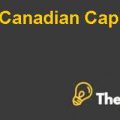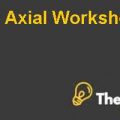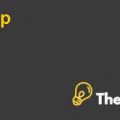
Criteria for Evaluating Future Alternative Trips
The criteria through which the company can evaluate the future alternative trips can be deciphered through the following:
- Time
- Cost
- Scope
- Tools
- Procedure
The time would allow Adventure Unlimited to decipher the trip schedule upon which the consumer can enjoy the trip without rushing on different activities. The time management is crucial for Adventure Unlimited in eliminating the dissatisfied element from customers because it has to monitor the transportation of its customers while on the trip. The company can loseits various potential customers through negative word of mouth (Meredith & Mantel, 2012). The alternative that is suitable for a customer in enjoying the trip can be considered as the reasonable option. The second criteria is another crucial element for Adventure Unlimited as it has suffered great losses because of cost mismanagement by the company. The alternative that costs low but provides higher degree of satisfaction amongst its customers can be considered as a viable option (Meredith & Mantel, 2012).
The scope for each alternative future trip must have a scope upon which the entire effort of the trip depends. The main scope of the company is to provide higher level of satisfaction to customers. However, the alternative future trips should develop its scope on the basis of providing customer satisfaction and great customer experience. The project that has the desired scope shall be selected. Similarly, the tools shall be developed by each alternative future trips to revise the time, cost, and scope for the trip so that the company may not suffer from more losses. These tools shall help in monitoring the time and cost as it shall not surpass the projected figure. The procedure would help in determining the right strategies and creative options incurred in the trip (Meredith & Mantel, 2012).
The five hypothetical trips has been listed below:
- On the Beach (OTB)
- Treasure Moments (TM)
- Flushing Meadows
- Safari Battleground
- Hoisting Colors
These hypothetical trips could be used as an example for evaluating the alternatives of the future trips. ‘On the beach trip’ is a trip to Hawaii beach and the scope of the trip is to allow customers to spend their amazing vacations. He cost of the project would be low because it is a domestic trip and the time spent in the trip is also very minimum due to the distance of the trip. This trip is very much feasible than other trips which include ‘Treasure Moments’ a trip to Egypt to find the lost treasure of King Solomon, ‘Flushing Meadows’ a trip to Paris, ‘Safari Battleground’ a trip to South Africa, and ‘Hoisting Colors’ a trip to Thailand. Amongst these alternatives, the company must go for catering its domestic market needs for ‘On the Beach’ trip because of low cost and time.
Organizational Structure
While considering the current situation of American Adventures, the company shall adopt organic organizational structure. Organic structure is an informal organizational structure which is flexible where the information flows from bottom to the top management. In organic structure, it allows employees to manage and adopt changes according to the situation because the decision making power rests with company’s employees. The particular structure requires little layer of management as it does not encourages direct supervision of employees. This approach is feasible in managing the customer relationship problems faced by the organization because as employees are empowered, they can do anything which satisfies their end consumers (Baligh, 2006).
There are three major factors which differentiates an organic organization with the mechanistic organization which includes the nature of complexity, formalization, and centralization. In organic organization, the element of complexity is very low which describes the simplicity of applying this structure. There is an informal structure which allows a lower management employee to interact and communicate with the top level management which allows no barrier for communication (Baligh, 2006). The third element is the nature of centralization which is also low as the structure of an organization depend upon decentralization where the strategic decision making power rests with the top management but the customer related problems that needs urgent attention is looked after by the lower level management which is most of the time in touch with the customers. The second aspect which is important in the organic structure is their ability to address the changing environment of a business. An organization can easily address the unforeseen problems and issues at hand which may would have been difficult in a conventional and a mechanistic structure where rules and procedures have to be addressed first (French, Rayner, Rees, & Rumbles, 2011)............................
This is just a sample partial case solution. Please place the order on the website to order your own originally done case solution.












